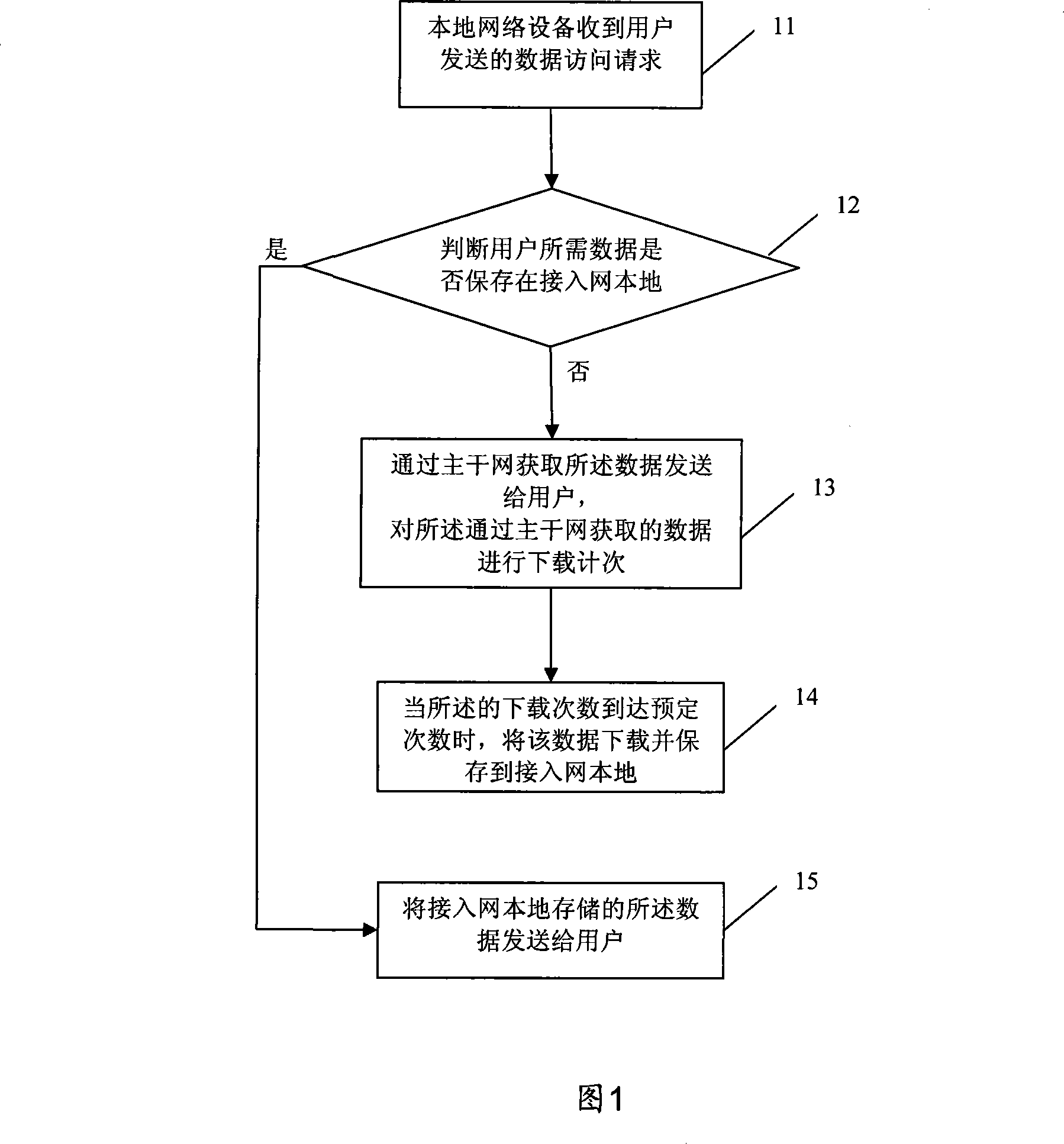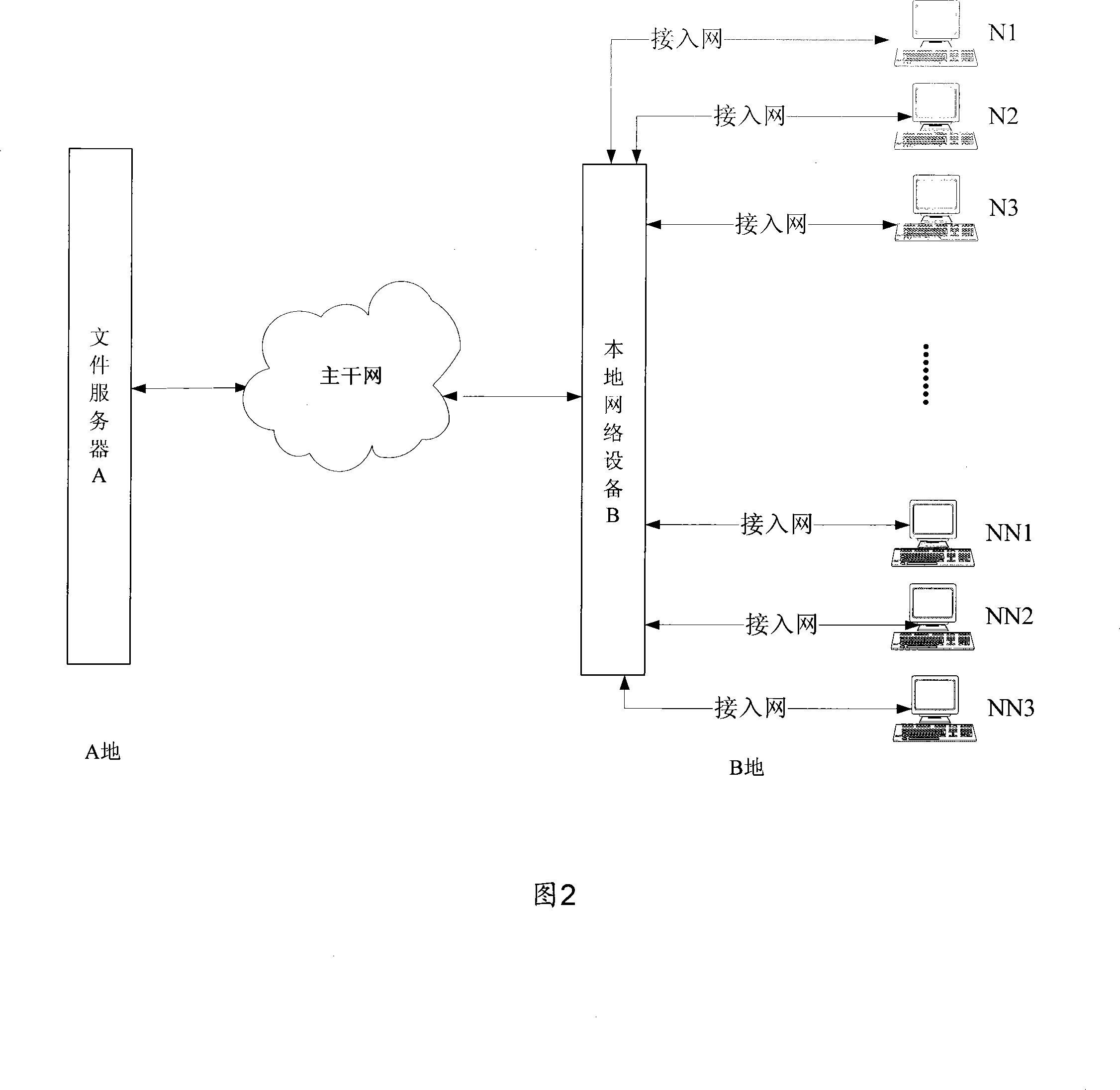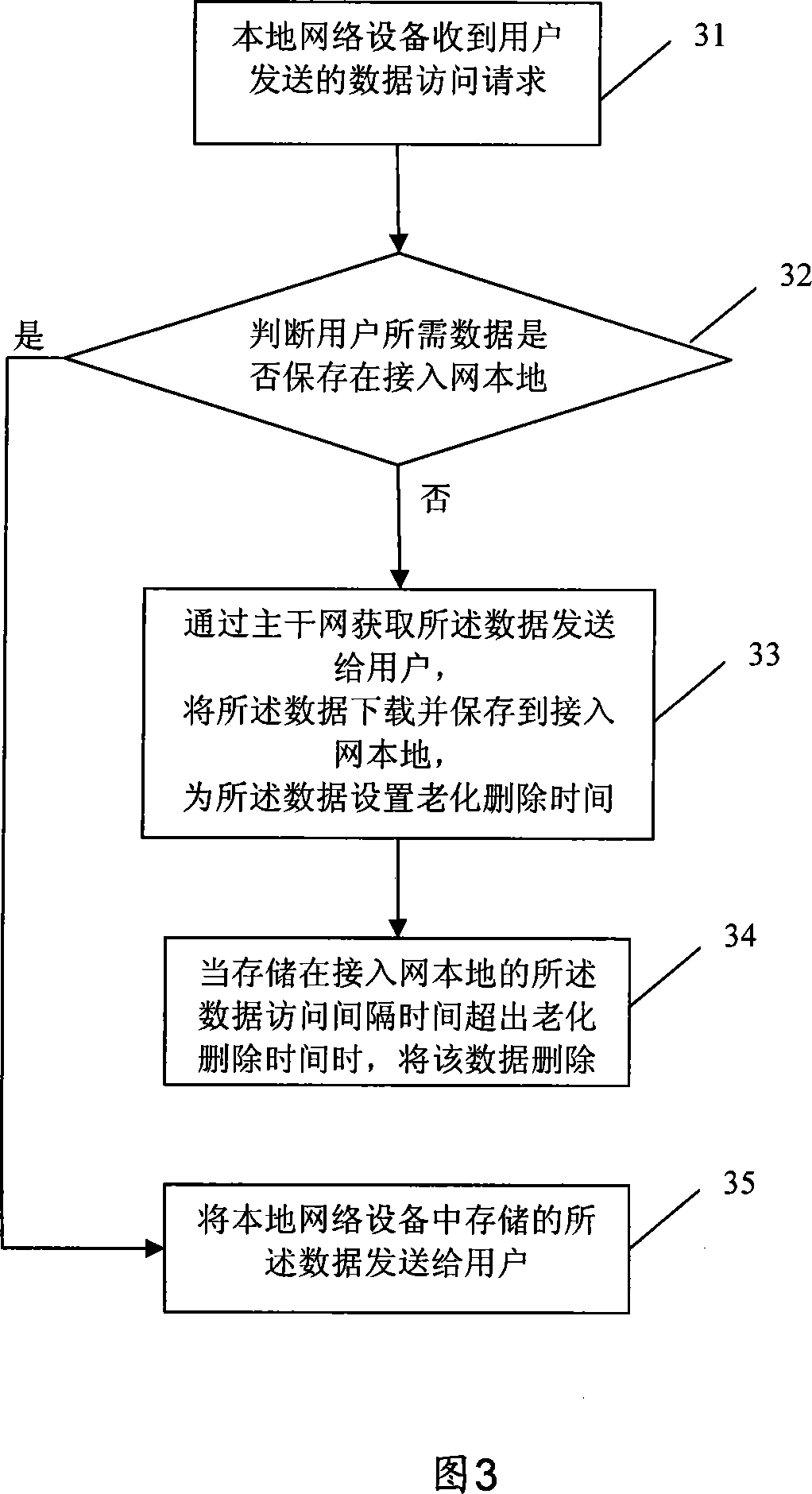Method and equipment for user acquiring network data
A network data and data technology, applied in the field of network communication, can solve the problem of backbone network bandwidth occupancy, and achieve the effect of reducing the occupancy of bandwidth resources
- Summary
- Abstract
- Description
- Claims
- Application Information
AI Technical Summary
Problems solved by technology
Method used
Image
Examples
Embodiment Construction
[0024] There is a lot of repeated transmission of data in the network. For example, users in multiple places B need to obtain the same data transmitted from place A at different times, then the data must be repeatedly transmitted from place A to place B at different times according to the needs of users. to meet the needs of different users in B. In order to reduce the resulting bandwidth occupation of the backbone network, in the embodiment of the present invention, when a data access request is received, it is judged whether the requested data is stored locally in the access network, and if so, it will be stored in the access network The local data is sent to the user, otherwise, the data is acquired through the backbone network and sent to the user.
[0025] Wherein, it may also include: monitoring the number of times a certain data is acquired through the backbone network, and saving the data locally in the access network when the number reaches a predetermined number. Th...
PUM
 Login to View More
Login to View More Abstract
Description
Claims
Application Information
 Login to View More
Login to View More - R&D
- Intellectual Property
- Life Sciences
- Materials
- Tech Scout
- Unparalleled Data Quality
- Higher Quality Content
- 60% Fewer Hallucinations
Browse by: Latest US Patents, China's latest patents, Technical Efficacy Thesaurus, Application Domain, Technology Topic, Popular Technical Reports.
© 2025 PatSnap. All rights reserved.Legal|Privacy policy|Modern Slavery Act Transparency Statement|Sitemap|About US| Contact US: help@patsnap.com



